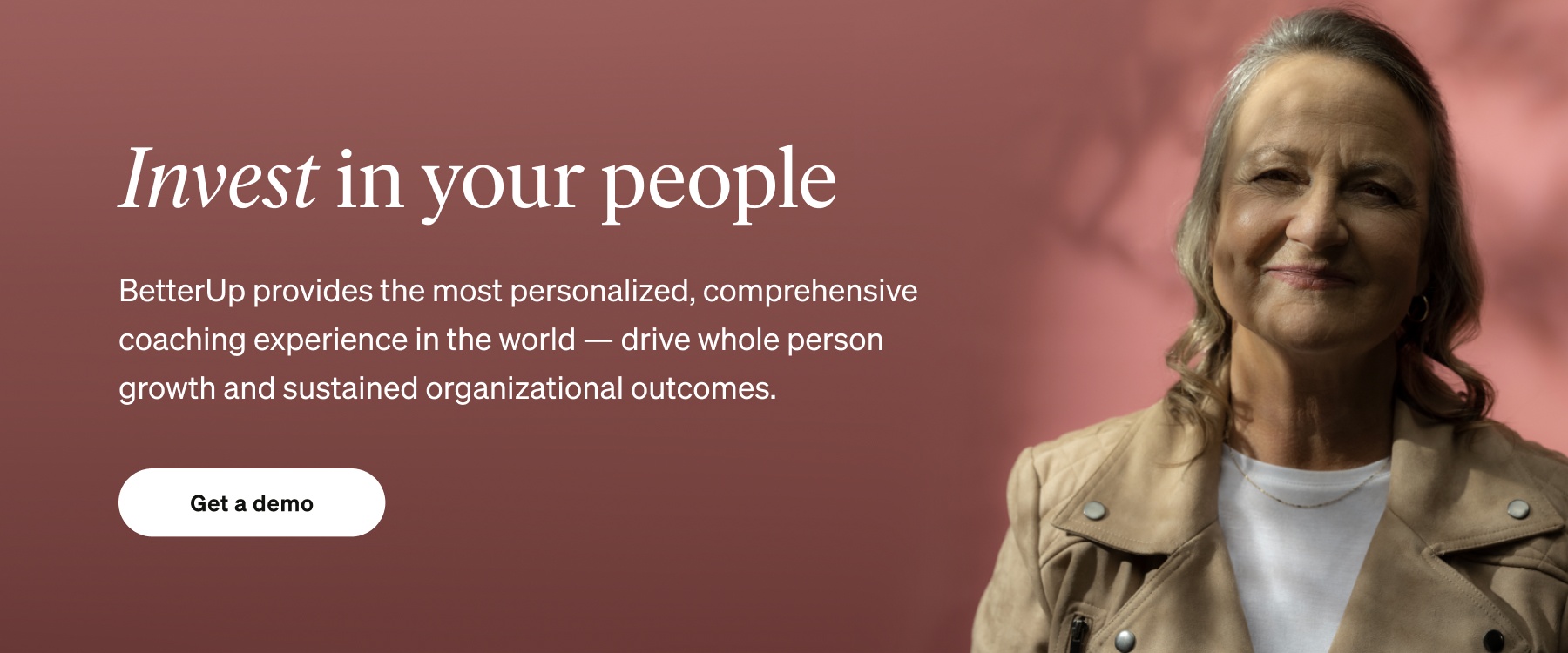-
For Business
For Business
Products
LeadBuild leaders that accelerate team performance and engagement.
Care™Drive productivity through sustained well-being and mental health for all employees with BetterUp Care™.
Solutions
Sales PerformanceTransform your business, starting with your sales leaders.
Diversity & InclusionFoster a culture of inclusion and belonging.
Customers
Case StudiesSee how innovative companies use BetterUp to build a thriving workforce.
- For Individuals
-
Resources
Resources
LibraryBest practices, research, and tools to fuel individual and business growth.
EventsView on-demand BetterUp events and learn about upcoming live discussions.
BlogThe latest insights and ideas for building a high-performing workplace.
ResearchInnovative research featured in peer-reviewed journals, press, and more.
- About
How COVID made people feel about their employers, for awhile

The Great Resignation doesn’t show signs of slowing down. Bankrate reports that in an August survey, 55% of Americans say they expect to search for a new job in the next 12 months. The quit rate hasn’t slowed much either, with June 2021’s rate rivaling April 2021.
We know it’s top-of-mind for a lot of our customers. Uncertainty — about the future, about the present — is the new normal. It isn't going away. The workforce is an organization's most agile and important asset when trying to navigate change and uncertainty.
At BetterUp, we've been tracking something called eNPS, or employer net promoter score, for all BetterUp Members for several years. This eNPS measures how Members feel about their employer — a measure of sentiment, favorability, and loyalty toward the employer.
Today, we have tens of thousands of ratings from US employees over time. So, we wondered: did a decline in eNPS precede the Great Resignation patterns?
It was a simple inquiry. But, when we looked at the data, the story was more complex: eNPS hit both its highest level BetterUp has on record and its lowest, all since the start of the pandemic.
The COVID-19 eNPS boost
Right after COVID-19 was declared a global pandemic, people (those who were still employed) generally experienced a significant increase in favorability toward their employers. In fact, between February 2020 and April 2020, the average favorability of employees toward their employers skyrocketed by more than 200%.
People liked their employers twice as much - a pretty unbelievable shift in such a short period of time.
But why? As we all remember, it was an extremely difficult time fraught with uncertainty, fear, job insecurity, stress, and unpredictable work conditions. As a psychologist who has studied what makes people unhappy with their work for nearly 15 years, I can say these conditions check a lot of boxes for disgruntlement. So why would a time so stressful not degrade employees views on their employers?
My hypothesis is that it largely hinges on the rapid, unexpected engagement with humanity that was brought on through the collective crisis and trauma. Organizations, and leaders, suddenly couldn't ignore that every employee was also a human being with physical health and safety needs, relationships and responsibilites that had to be accounted for, and mental and emotional needs that were suddenly bigger and right at the surface.
There was an overwhelming acknowledgment of the whole person nature of every individual. People were genuinely checking in with each other, taking time for personal connection, supporting each other, and working together to navigate through uncertainty. Organizations showed sensitivity, ramping communication, mobilizing support offerings, problem-solving with speed, and in many cases extending compassion, empathy, and understanding to their employees.
Employees were being listened to and seen as humans with vulnerability, each person having unique circumstances to contend with. Perhaps the time of crisis facilitated heightened bonding in the workplace and a sense of community as teams and businesses mobilized together in response.
Despite uncertainty, fear, and insecurity, employees had explosively positive feelings of favorability toward their employers during that time.
I wanted to test the hypothesis that an increase in the general goodness toward each other during that time may explain the pattern of eNPS. We also measure a sense of being liked, cared for, and accepted: belonging. It turns out, the pattern of belonging over the same period nearly mirrors that of employer favorability scores, suggesting a link between feeling human connection at work and eNPS.
The value of leading with empathy
People bring their whole selves to work. There is power in leaders recognizing and supporting people as whole people with vulnerabilities, fears, and needs. And how that comes back to the organization in the form of loyalty.
As organizations contend with the war for talent, the value of compassion, empathy, and basic human decency in the workplace should not be underrated. Empathetic leadership doesn’t just lower stress for teams, but it can boost productivity and goal attainment. Work should be designed, leaders developed, and culture built with this in mind.
Early in the pandemic, McKinsey & Co wrote about the importance of compassionate leadership. Forbes as well. But you are harder pressed to find prominent voices continuing to emphasize its value in 2021.
Yet, the COVID-19 crisis is not yet over. School is starting. Tragedies continue to dominate the headlines. And humans need compassion, kindness, and empathy. Full stop. These are invaluable leadership skills not just in times of crisis, but at all times.
Right now organizations are defining what work will look like in this next phase of reality. We have the perfect opportunity to reform and redefine conventional leadership styles, create more empathetic leaders, and bring a tone of compassion to our work cultures. If we do that, we will ensure happier, and more loyal, employees in the new era of work.
Note: Employer NPS and belonging went on to take huge hits since the beginning of 2021. I have little doubt that those patterns are tangled up in “return to work” issues. Stay tuned for Part 2.
Erin Eatough, PhD
Sr. Insights Manager




